This is the latest in a series of articles on the recent Toronto International Film Festival. [Part 1][Part 2][Part 3] [Part 4] [Part 5]
We live in increasingly explosive times. However, the acuteness of our reality continues to find only a limited and muffled expression in contemporary cinema. This isn’t merely a social problem, but an artistic one, because seriously reproducing, “re-imaging” life and presenting objective truth about the world are among art’s prime responsibilities.
There is nothing passive or contemplative about that effort, either on the part of the artist or the spectator. When people grasp life and reality deeply, that urges them on to act against what needs to be changed and creates an awareness of what should come in its place.
To make sense of what is (and what needs to be) requires in some way a reckoning with the past. Flexibility in depicting the human condition demands knowledge, specifically historical knowledge. The greatest artists of the past were able to depict the world thoroughly and securely because they possessed a comprehensive knowledge of the real world and its complex relations, something largely missing today.
In Toronto this year, there were a few films that shed light on the present through the use of an historical lens. For the most part, these were works of beauty, intensity and insight.
It is notable that over the last number of Toronto festivals, movies dealing in particular with France’s colonial record and associated issues have stood out from the majority, including within French cinema itself. Terrible wounds are still fresh. The traumas inflicted on the Maghreb and other regions of Africa by imperialism haunt and intensify the struggles of the working class in France today. A significant portion have forebears who opposed colonialism in its various forms.
Furthermore, the current eruption of neo-colonialism has registered with the most alert artists, giving their work an added relevance and power.
Massacre in New Caledonia
Such a film is the remarkable Rebellion, about the 1988 French massacre in New Caledonia, by Mathieu Kassovitz, a well-known French actor, director, screenwriter and producer. At a question-and-answer session after one of the movie’s public screenings in Toronto, the director impressed on the audience that he was driven to make the film—a 10-year project fraught with difficulties—because he viewed the story as a universal one. He noted that the imperialist interventions today are branded as a fight against terrorism. “A billion people are labeled as terrorists,” stated Kassovitz, “and this is all about dehumanizing opponents.”
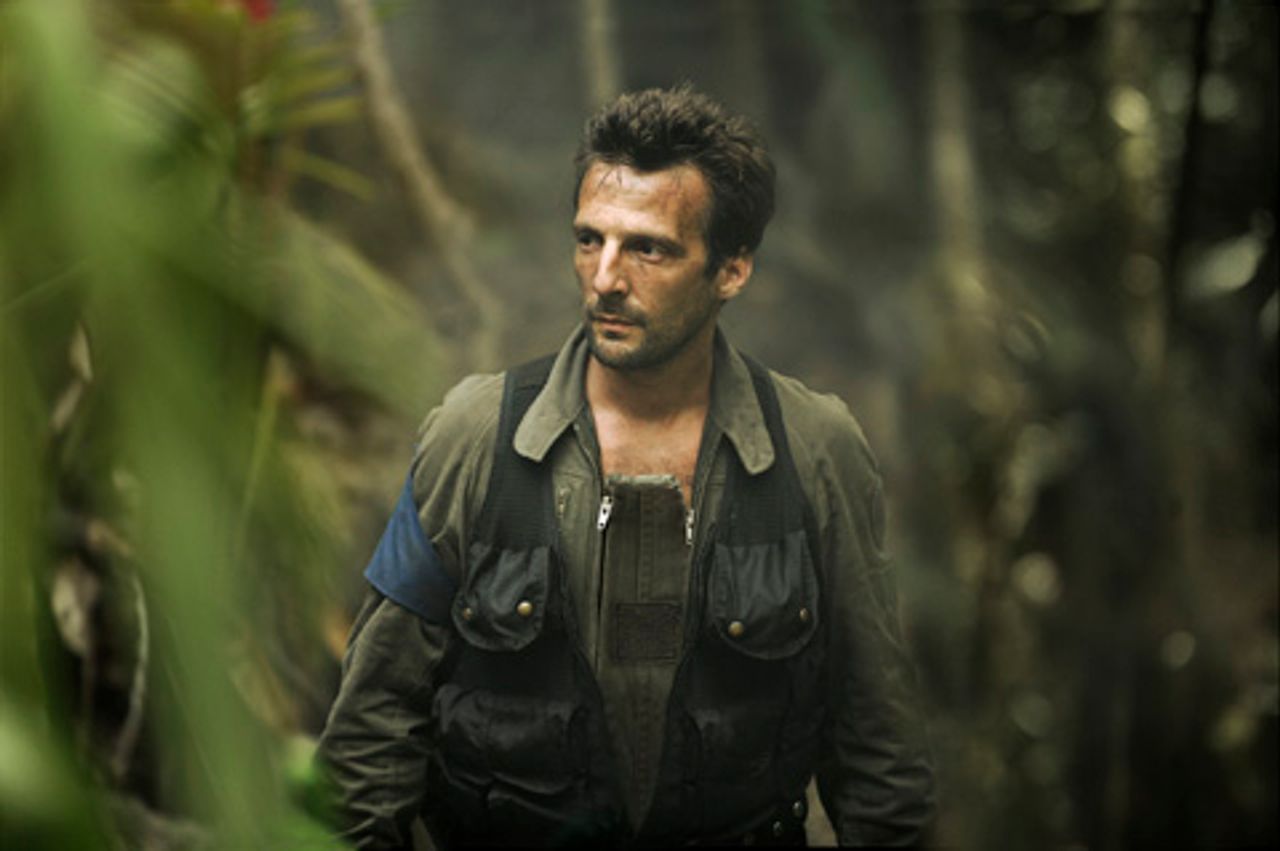 Rebellion ( L’ordre et la morale)
Rebellion ( L’ordre et la morale)
“France stole the New Caledonian land that harbors the world’s fourth biggest nickel mine,” said the director. This reality still afflicts the country’s population.
On May 5, 1988, hundreds of French elite troops stormed a cave near Gossanah in northern Ouvéa in New Caledonia—10,000 miles from France—to rescue 16 French gendarmes captured two weeks earlier by Melanesian independence fighters—the Kanaks (collective name of indigenous New Caledonians) and the Socialist National Liberation Front, the FLNKS. It was a massacre that left approximately 20 Kanaks dead. A year later, Jean-Marie Tjibaou, a major figure in the Kanak nationalist movement, was assassinated. The movement had already suffered a serious loss in 1985, when another key leader, Éloi Machoro, was murdered by police snipers.
The assault on the cave, code-named Opération Victor, was motivated by the attempt of then-Prime Minister Jacques Chirac to win support in the 1988 presidential elections. So great was the pressure from Paris that Minister of Overseas Territories Bernard Pons suggested that napalm be used, which would have incinerated both hostages and hostage takers. The incursion left men from over half of the villages in Ouvéa dead or imprisoned.
Kassovitz skillfully dramatizes the horrific details of the event. His film’s French title L’ordre et la morale translates as Order and Morality, an apparent reference to hypocritical French “Republican” authority.
Kassovitz plays Philippe Legorjus, commander of a small squad from the GIGN, the gendarmerie’s special operations unit. Given limited time to negotiate for the hostages’ release before an army attack, he discovers that the separatists never intended to kill anyone and tries to prevent their slaughter. But he is up against a vengeful, racist military being dictated to by French politicians who are courting neo-fascist elements.
Fast-paced, tightly structured and adroitly filmed, Kassovitz has fashioned a work that treats the exposure of an historical happening as a life-and-death matter.
Moroccan Immigrant Framed
Omar Killed Me (Omar m’a tuer) is a sympathetic and committed film from French director Roschdy Zem. It tells the true story of Omar Raddad (Sami Bouajila), accused of and jailed for the murder of his employer. The film carefully develops the details of the highly publicized 1990 case in which a Moroccan immigrant was railroaded to prison for the killing of 65-year-old Ghislaine Marchal, beaten to death in the basement of her suburban Cannes villa.
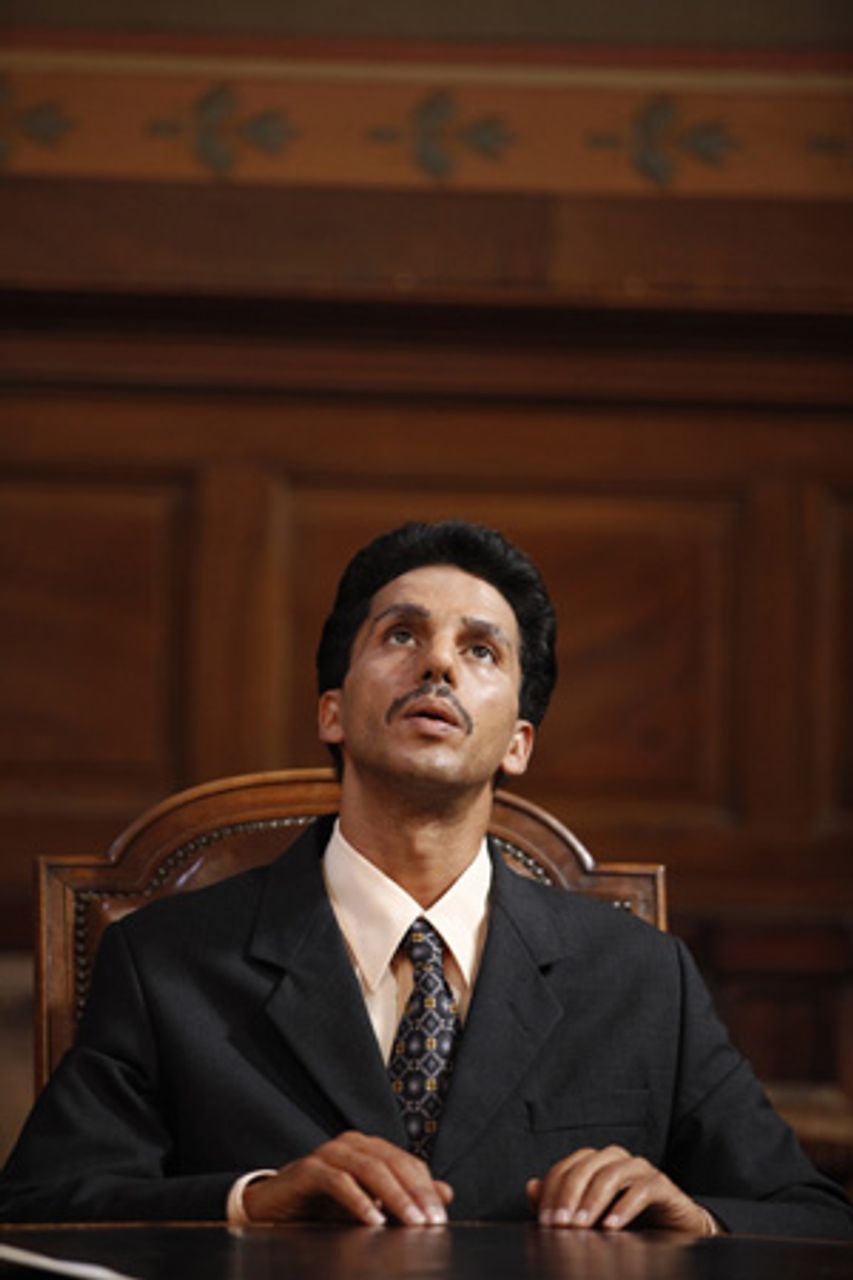 Omar Killed Me
Omar Killed MeThe only clue to the crime is the ungrammatical inscription “Omar m’a tuer” (“Omar killed me,” more or less) written in Marchal’s blood. The investigations of a crusading novelist, Pierre-Emmanuel Vaugregard (Denis Podalydes), are intercut with the film’s depictions of the poverty and chronic difficulties faced by Omar and his family.
This makes for a riveting view of France’s legal persecution of immigrants and the bias of the persecutors. The performances and adept mis-en-scene add to the film’s tension. There is an indescribable moment at the film’s end when the camera lingers on the face of the real Omar, who although no longer incarcerated, still fights to clear his name. In his vulnerable visage is the sigh—and anger—of the oppressed.
Muslim fighters in the French Resistance
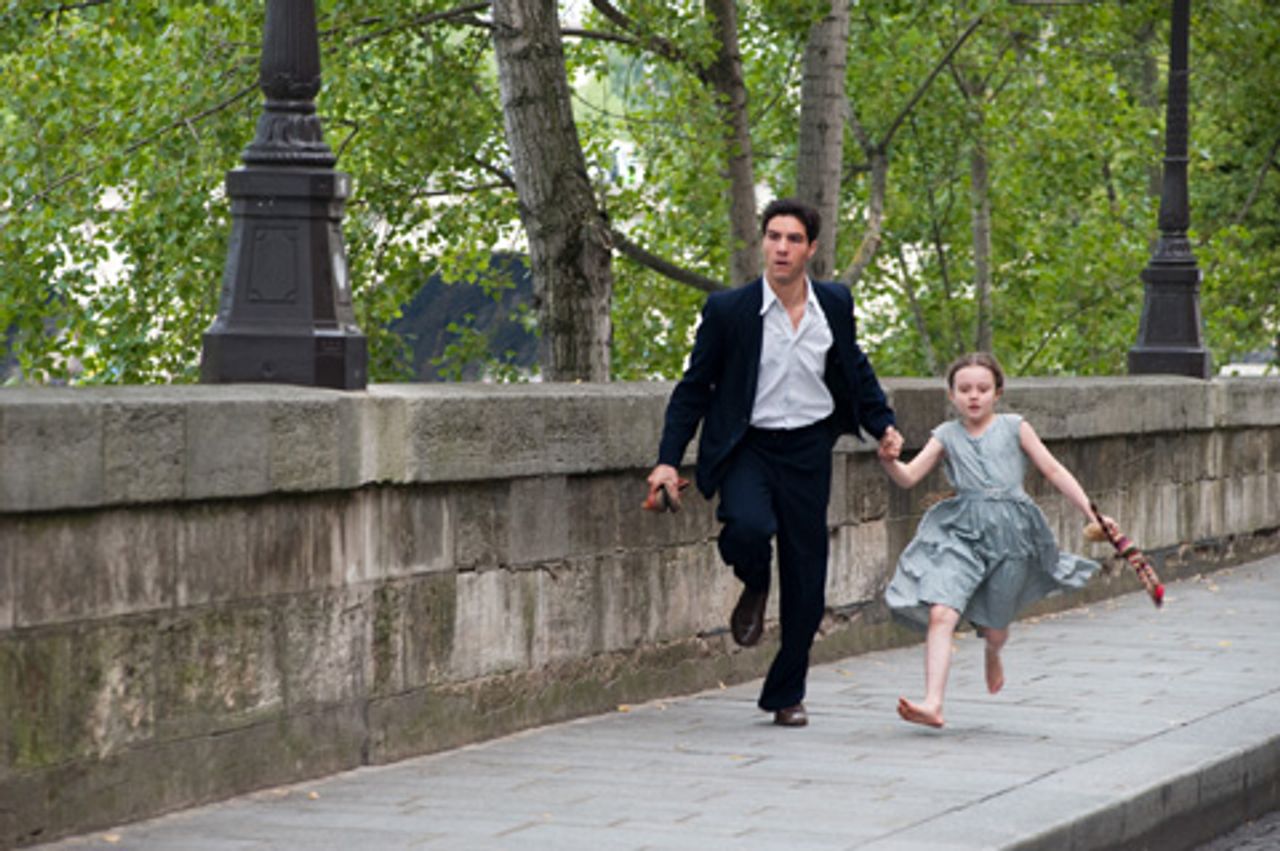 Free Men (Les hommes libres)
Free Men (Les hommes libres)In 1942, in Paris, the French Resistance is being assisted by Muslim fighters who are using the cover of the Mosque of Paris to shelter Jews and deal with Vichy informants. Moroccan-born Ismaël Ferroukhi’s Free Men (Les hommes libres) chronicles the political awakening of Younes (Tahar Rahim), a barely literate young Algerian immigrant and street hawker of black market goods.
When Younes is picked up by the pro-German Vichy police, he is roped into becoming an informant in the Mosque, which is under suspicion by the occupying forces. It is not long before the Mosque’s rector (veteran French actor Michael Lonsdale) suspects what the clumsy Younes is up to. As Younes becomes more involved in the anti-Nazi community, he develops into a courageous fighter, befriending in the process an appealing Algerian singer, Salim (Mahmoud Shalaby), a Jew passing as Muslim.
Although it is not entirely spelled out in the film, working class members of the French and Algerian Communist Parties played a major role in the effort to rescue the persecuted Jews. Younes’s cousin is obviously a CP member, and the woman Younes falls for, Leila (Lubna Azabal), he learns after her execution by the Gestapo, was a leading member of the Algerian CP.
Writer-director Ferroukhi based his movie on little-known stories of Muslim men and women who joined the French Resistance. The Mosque’s rector, Si Kaddour Ben Ghabrit, who died in 1954, played the apolitical holy man for the Nazis, while assisting those fleeing persecution. The Algerian singer Salim Halali survived to become a famous North African performer. That the serene Mosque is in actuality a seething political cauldron imparts an unusual texture, punctuated by a light-to-dark cinematography. Lonsdale as the rector adds gravitas, and Rahim’s Younes accomplishes a credible transition from political darkness to light.
Marlon Brando and Tunisia
From Tunisia, Always Brando is a quirky but interesting film by veteran director Ridha Behi. It combines Behi’s interactions with a dying Marlon Brando and a criticism of the film industry’s narcissism and opportunism.
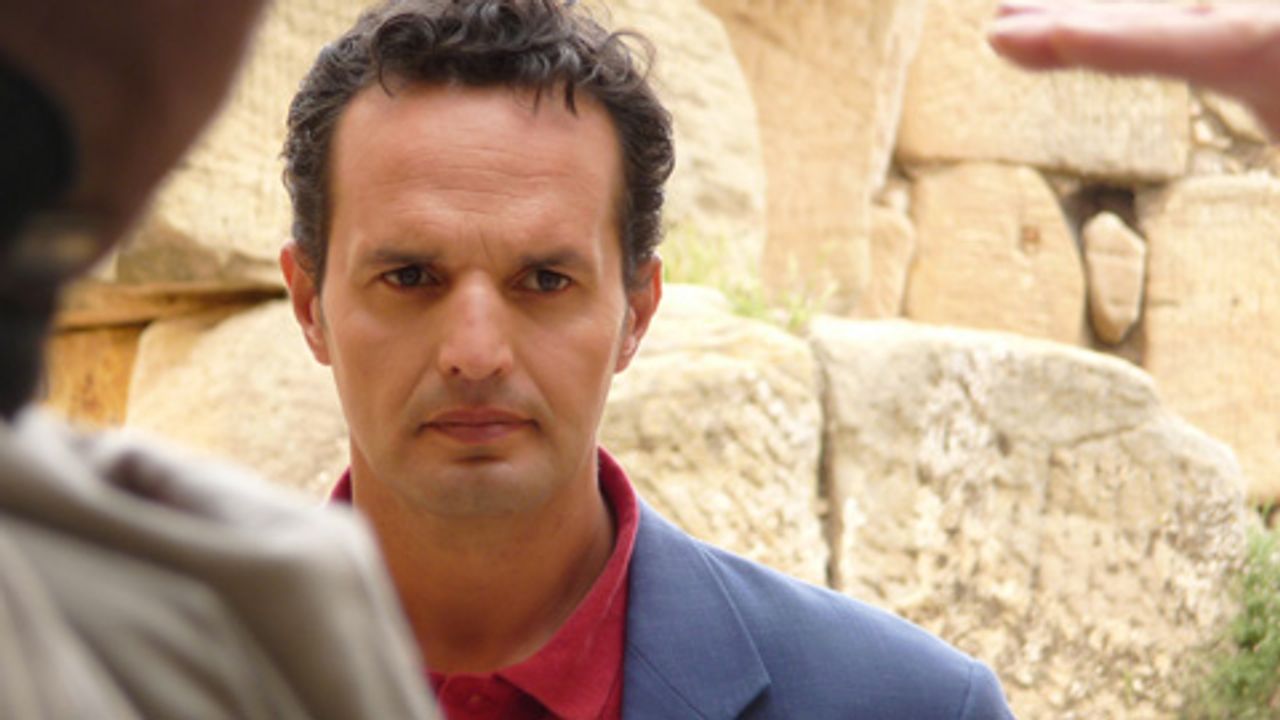 Always Brando
Always Brando
After years of trying to make contact with the film star and political activist, Behi was finally able to visit Brando in Los Angeles in 2004, shortly before the latter’s death. The filmmaker crosscuts documentary footage of these meetings with a bed-ridden Brando and scenes from Brando’s filmography with a fictional narrative about a young Tunisian man from the countryside (Anis Raache) who resembles Brando.
The movie’s core concerns Anis’s downfall, seduced into believing he is Hollywood-bound by a Western film crew making a movie in his village. This is meaningfully accentuated by clips from Brando’s Burn!, a 1969 anti-colonial work directed by Gillo Pontecorvo (Battle of Algiers).
The film is somewhat crudely done, although the performances are fine. The movie’s production notes offer a bonus in the director’s account of his meeting with the fascinating Brando: “ ’My dear Ridha,’ Marlon Brando said to me. ‘You want to make a film in America. George W.[Bush]’s America? I can already see at least five obstacles! First, you’re an Arab and you look like an Arab. Second, you speak very little English. Third, you do not know jazz. Fourth, you have chosen me as your actor. Me. Brando. An old man in pretty bad shape. And fifth, and the fifth obstacle is much more difficult than the other four, you don’t have any support whatsoever in Hollywood.”
The Egyptian Revolution
The revolution in Egypt that began on January 25 of this year represents an historic turning point that continues to reverberate around the world. It is an irrefutable demonstration that the working class is the principal agent of social change.
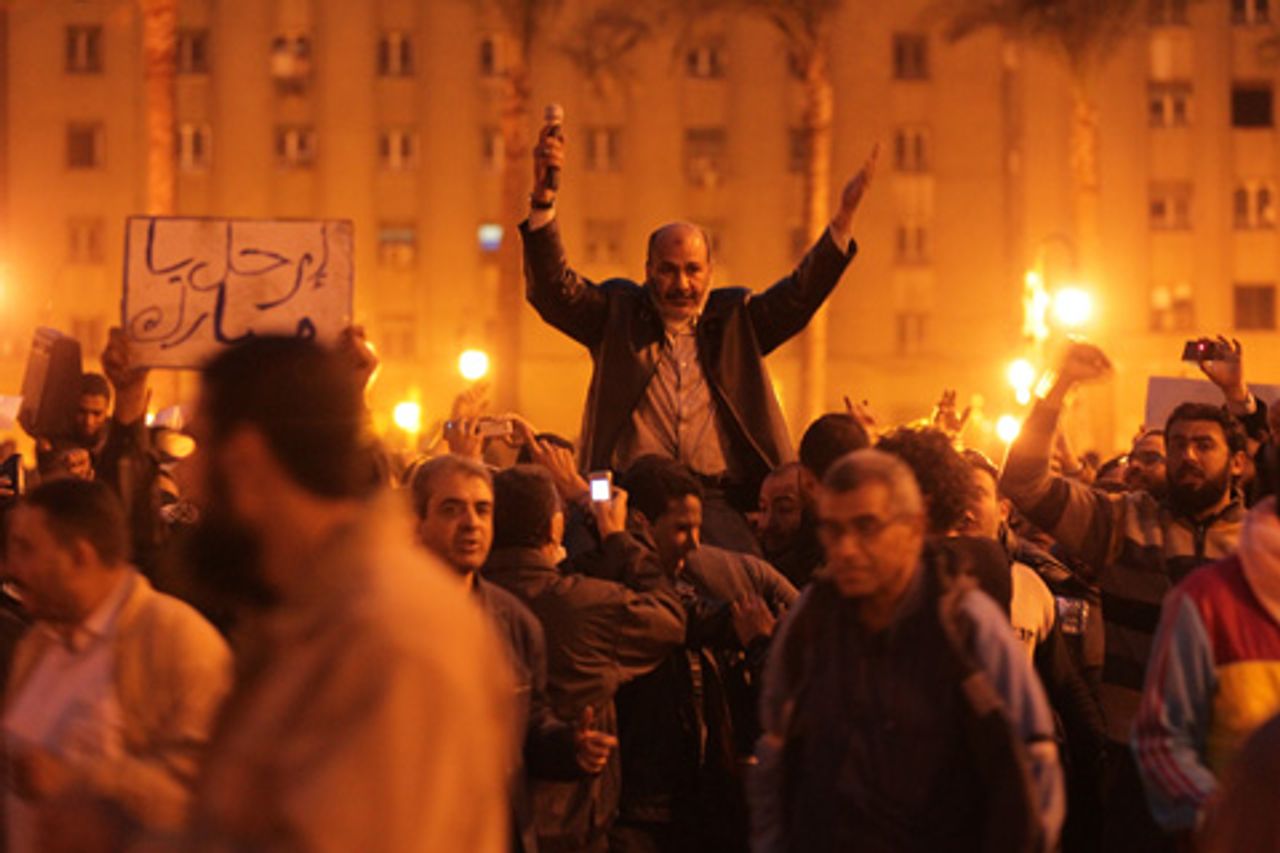 Tahrir 2011 “The Good, The Bad and The Politician”
Tahrir 2011 “The Good, The Bad and The Politician”The reigning junta, established with US help, is led by Mohamed Hussein Tantawi, who was defense minister under former dictator Hosni Mubarak for 20 years. All the bourgeois parties—Islamists, liberals and alleged leftists—have unanimously declared that the military will ensure a so-called “democratic transition.” This presents great dangers to the population.
The Toronto festival screened a documentary, Tahrir 2011 “The Good, The Bad and The Politician,” by three young Egyptian filmmakers—Tamer Ezzat, Ayten Amin and Amr Salama. Created as a triptych with each segment directed separately, the film contains valuable footage of the insurrection.
“The Good” shows the massive numbers sweeping into Tahrir Square on January 25. An entire people were on the move, uniting all sections of the working and suffering population. The segment features the thoughts of two young people, one a member of the Muslim Brotherhood, as well as those of a doctor who helped in the field hospital at the Square.
“The Bad” focuses on the police and security forces, interviewing four police officers from different sectors of the Ministry of the Interior. They speak about how they were instructed to deal brutally with demonstrators between January 25 and 28, including by assassination. One of the officers talks about encountering the staggering number of people: “There was no way to stop them reaching Tahrir Square. It was people chasing police.”
“The Politician” is the weakest portion of the documentary. It opens with the semi-animated satirical—and trivial—”10 steps to becoming a dictator” (e.g., creating an attractive hairstyle), and it reveals the filmmakers as being dangerously complacent about the present situation in Egypt.
The section continues with narration from bourgeois oppositionists such as Mohamed ElBaradei. Former ministers and National Democratic Party members weigh in, including Dr. Hossan Badrawi, one of Mubarak’s closest advisors, who was faced, according to the director’s statement in the film’s production notes, with “the difficult task of trying to open the president’s eyes to the truth.”
Despite presumably sincere intentions, the film displays a self-satisfied smugness about the post-Mubarak reality, even as Egyptian workers are losing many of their illusions in the military and the junta. The documentarians provide a platform for reactionary politicians and attempt to put a human face on security forces.
There is every indication in Tahrir 2011 that events in Egypt are viewed exclusively as a national affair. This is terrible blindness. The imperialist war of conquest in Libya is one of the efforts aimed at suppressing the movements in Egypt, Tunisia and throughout the region. In fact, as the recent demonstrations on Wall Street reveal, the implications of Tahrir Square are global in character. And for the Egyptian population itself, the greatest political challenges still lie ahead.
To be continued
